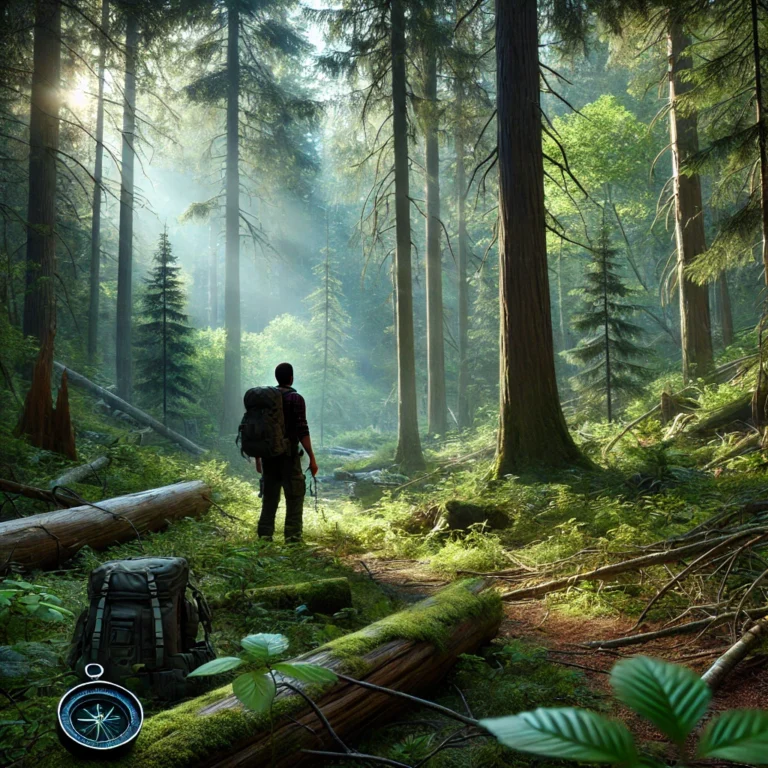Getting lost in the wilderness can be terrifying, can’t it? Trust me, I know the feeling—it’s that moment your surroundings suddenly look unfamiliar, and you realize you’ve wandered way off track.
But here’s the thing: staying calm and knowing what to do next when you realize you’ve lost your way, can turn a potentially dangerous situation into a story of resilience and survival.
Let me walk you through some practical tips I’ve learned that can help you get back to civilization, safe and sound.
Take a Breath and Assess
The first step? Don’t panic. I know it’s easier said than done, but freaking out only wastes energy. Instead, stop where you are, take a deep breath, and look around. What do you hear? Water? Wind in the trees? Distant noises that might mean people?
Check your gear. Do you have a map or compass? Even a smartphone with a little charge left might help if it has GPS. And if you don’t have any tools, that’s okay. Nature has its own signs to guide you—you just need to know how to read them.
Nature’s Navigation Hacks
When I was younger, I learned some simple tricks for figuring out direction. They’ve saved me more than once.
- Use the Sun: If it’s daytime, watch where the sun moves. It rises in the east and sets in the west. Use this to orient yourself.
- Look to the Stars: At night, the North Star (Polaris) is a lifesaver if you’re in the Northern Hemisphere. Find it, and you know where north is.
- Follow the Land: Natural features like rivers or valleys often lead toward populated areas.
If you don’t know the area well, these clues can at least give you a general sense of direction.
Get Noticed
When I was in a tricky spot once, signaling saved me. Here are a few ways to make yourself visible or heard:
- Build a Fire: Fire isn’t just for warmth—it’s also a great way to create smoke signals during the day or light at night.
- Reflect Light: Got anything shiny? A mirror, a knife blade, even your phone screen can reflect sunlight to catch someone’s attention.
- Make Noise: Blow a whistle or yell in intervals. Don’t overdo it—save your energy, but make sure you’re loud enough to be heard if someone’s nearby.
Rescue teams often look for these signs, so don’t hesitate to use them.
Follow Trails and Water
If you’ve ever hiked on marked trails, you know they’re usually there for a reason—to guide people to and from civilization. If you stumble across a trail, stick to it!
Water is another great guide. Streams and rivers usually flow toward larger bodies of water, and guess what? Towns and villages are often built near water sources. Be careful around fast-moving water, though—cross only if it’s safe.
Preparing for a Longer Trek
If it looks like you’re going to be out there for a while, don’t panic. You can make it. Here’s what you should focus on:
- Shelter: Find or create something to protect you from wind, rain, or cold. Even a simple overhang can help.
- Water: Stay hydrated! If you can’t find clean water, try boiling it or using natural filtration like sand or charcoal.
- Food: You’d be surprised what you can eat if you’re careful. Berries, nuts, and even insects are all options. Just make sure you’re positive something’s safe before eating it.
Turn Lessons Into Strength
No one wants to get lost, but let me tell you—it’s one of the best ways to learn what you’re capable of. Each time I’ve faced a tough situation in the wilderness, I’ve come away stronger and better prepared for the next adventure.
So, if you’re lost, don’t see it as the end of the road. See it as a challenge. Stay calm, trust yourself, and use these tips to guide you back to safety. You’ve got this.



